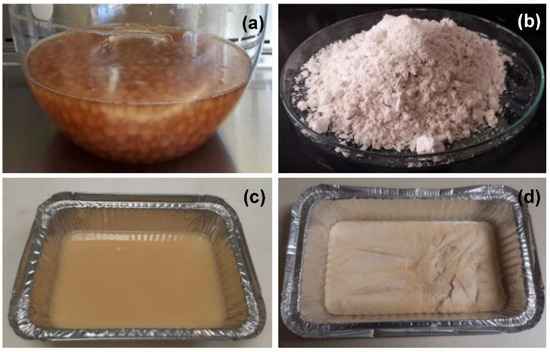Phenol Chloroform Recipe: Easy DIY Guide
Phenol chloroform can be prepared by mixing an equal volume of phenol and chloroform. Phenol chloroform, a commonly used organic solvent in molecular biology, is prepared by simply combining equal volumes of phenol and chloroform.
This mixture has many applications, such as DNA extraction, as it allows for the separation of DNA from proteins and other cellular components. Phenol chloroform is highly effective for denaturing proteins, disrupting cellular membranes, and extracting nucleic acids. This versatile solvent has become an essential tool in various molecular biology techniques, including DNA isolation and purification.
Understanding how to accurately prepare phenol chloroform is crucial for researchers working in the field of molecular biology, as it enables them to carry out their experiments effectively and efficiently.
Safety Precautions
Phenol chloroform preparation requires strict adherence to safety precautions. To ensure personal safety, it is crucial to wear protective clothing and equipment. This includes gloves, goggles, and a lab coat. Proper hand hygiene is essential before and after handling the chemicals.
Furthermore, it is imperative to work in a well-ventilated area to minimize exposure to fumes. Good ventilation ensures a safe working environment and reduces the risk of inhalation. Following these safety guidelines will help prevent accidents and protect your health when working with phenol chloroform.

Credit: www.mdpi.com
Materials And Equipment
Phenol chloroform recipe requires specific materials and equipment. For phenol extraction, you will need phenol, chloroform, isoamyl alcohol, sodium acetate, water, and glassware. Pipettes are essential for accurate measurements, and a centrifuge will facilitate phase separation.
Phenol-Chloroform Extraction Protocol
Phenol-Chloroform extraction protocol involves sample preparation, organic phase separation, DNA precipitation, and washing and drying. The sample preparation step ensures optimal yield and purity of the extracted DNA. During organic phase separation, phenol and chloroform are added to the sample to separate DNA from proteins and other contaminants.
The DNA is then precipitated using ethanol or isopropanol, which allows for its separation from the liquid phase. After precipitation, the DNA is washed to remove any remaining impurities and dried to remove any residual solvents. This protocol is widely used in molecular biology research to isolate DNA of high quality and purity for subsequent analysis.
Troubleshooting
Low DNA yield in phenol chloroform DNA extraction can be attributed to contaminants present during the process. Contaminants often affect the purity and yield of the DNA preparation. One commonly encountered issue is the presence of residual phenol or chloroform, which can inhibit DNA precipitation and lead to lower yields.
Additionally, the use of old or expired reagents may also contribute to low DNA yield. Another factor to consider is extraction failure, which could occur if the protocol is not followed accurately or if the starting material is of poor quality.
To troubleshoot low DNA yield, it is recommended to thoroughly wash the DNA after extraction to remove any residual contaminants. Additionally, using fresh and high-quality reagents and ensuring proper handling of the samples can help improve DNA yield in phenol chloroform extraction.
Other Applications Of Phenol-Chloroform Extraction
Phenol-chloroform extraction offers a wide range of applications beyond DNA isolation. One of these applications is RNA extraction, where phenol-chloroform is used to remove contaminants and retrieve high-quality RNA samples. Additionally, it can be utilized for protein purification, enabling the isolation of proteins from complex mixtures.
The method’s ability to separate lipids from other molecules makes it ideal for lipid isolation and further analysis. With its versatility and effectiveness, phenol-chloroform extraction has become an essential technique in various biological research fields. Researchers commonly employ this method for RNA extraction, protein purification, and lipid isolation, providing valuable insights into different biological processes.
This extraction technique is highly reliable in yielding pure samples, making it an indispensable tool for scientists studying these molecules’ specific functions and interactions.
Frequently Asked Questions For Phenol Chloroform Recipe
How Do You Prepare Phenol:Chloroform Mixture For Dna Extraction?
To prepare phenol:chloroform mixture for DNA extraction, combine equal volumes of phenol and chloroform.
What Is The Phenol:Chloroform Mixture Used For?
The phenol: chloroform mixture is used for DNA extraction and purification procedures in molecular biology.
How Much Phenol:Chloroform For Dna Extraction?
For DNA extraction, the recommended ratio of phenol to chloroform is 1:1.
What Is The Phenol And Chloroform Method?
The phenol and chloroform method is a technique used to separate DNA and other molecules.
Conclusion
To wrap up, crafting your own phenol chloroform solution can be a cost-effective and efficient method for various molecular biology applications. This versatile recipe allows you to obtain high-quality DNA or RNA, enabling accurate analysis and research breakthroughs. By following the step-by-step instructions outlined in this blog post, you can easily create the phenol chloroform solution in your laboratory, ensuring its purity and reliability.
Remember to prioritize safety at all times, wearing appropriate protective gear and working in a well-ventilated area. Additionally, proper storage and disposal of the solution is crucial to prevent any harm to yourself, others, and the environment. Whether you are working on DNA extraction, RNA isolation, or protein purification, this homemade phenol chloroform recipe can be a valuable asset in your scientific endeavors.
Happy experimenting!